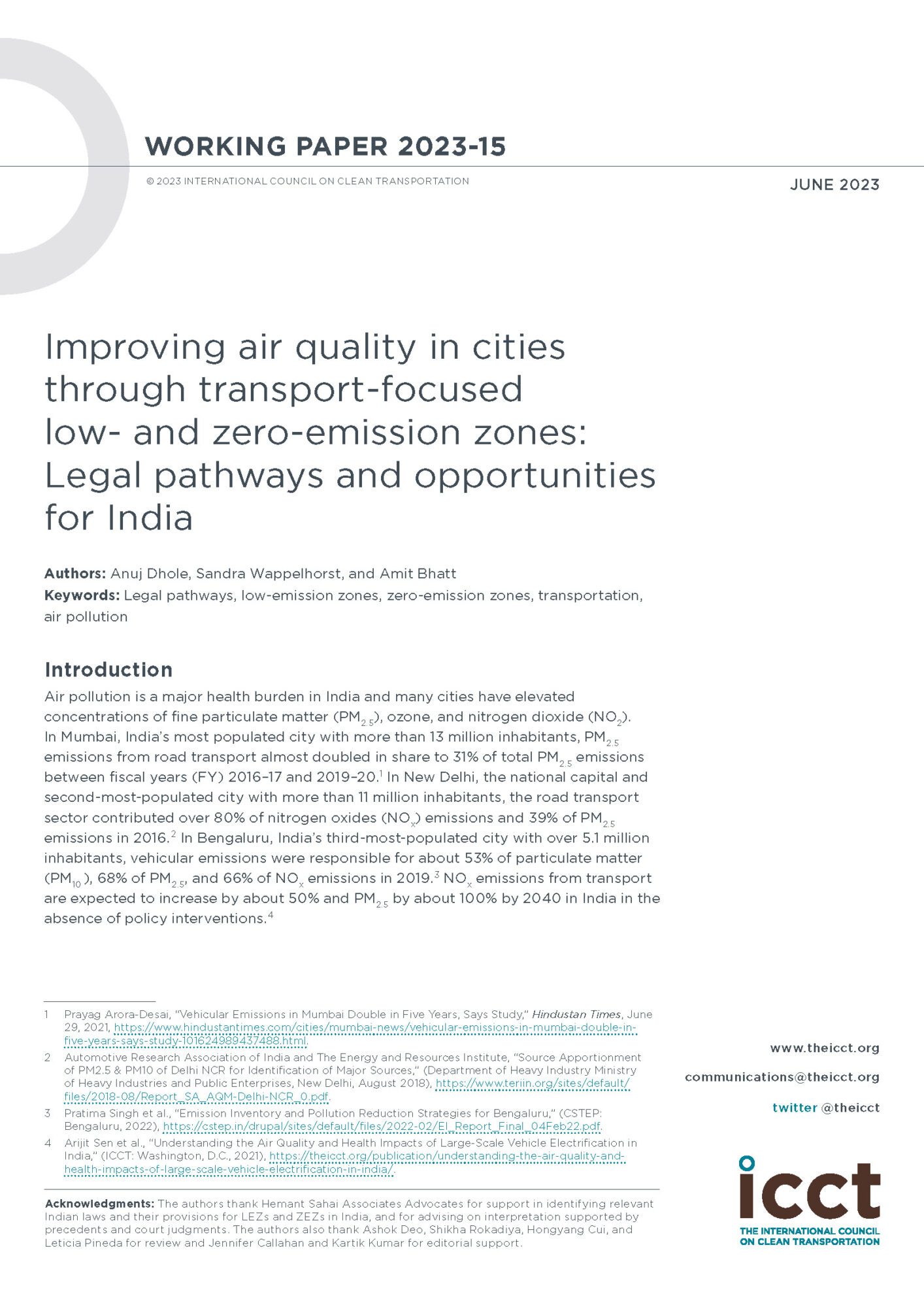Blog
Low-emission Zones – a catalyst for improving transit infrastructure in cities
This blog was originally published in ETAuto.
The Government of India is emphasizing the need to decarbonize road transport, and low-emission zones (LEZs), geographically defined areas where the operation of highly polluting motorized vehicles is restricted, can accelerate this transition toward cleaner mobility. LEZs also have the potential to improve quality of life for urban residents because of the health benefits they bring.
LEZs are becoming an increasingly adopted intervention to curb urban air pollution and traffic congestion, especially among European cities where more than 320 such zones exist. In addition to regulating the movement of polluting vehicles, LEZs also help spur mode shift from private vehicles to public transit and more active mobility alternatives like walking and cycling. As cities in India consider such interventions to address the issues of pollution and traffic congestion, and to meet decarbonization goals, how would upgrading transport infrastructure bring a range of benefits, including support for LEZs?
Enabling regulation of highly polluting vehicles
To identify vehicles that are contributing to most emissions, city authorities need vehicle-specific information like the fuels they run on, their years of manufacture, and the emission standards to which they are certified, for every vehicle plying in the city. While vehicle-specific information is available through the VAHAN database, the challenge lies in ascertaining polluting vehicles that are plying in the city and their travel patterns.
Vehicle registration data available with the Regional Transport Offices (RTO) that cover a given city is seldom considered a proxy to determine the motor vehicles plying in that city. However, the vehicles plying within a city could have been registered anywhere in the country, and the registration data from RTOs is not likely to be a complete representation of vehicles operating in that city. In 2016, for example, it was estimated that over 5 lakh personal passenger vehicles enter Delhi every day, which was more than the total number of vehicles getting registered in the capital in a year. An equal number could be traveling out of the city as well, deeming the registration data inept for determining polluting vehicles.
Installing closed-circuit television (CCTV) cameras, preferably those with the ability to read license plates, at strategic locations across the city is an ideal way to access real-time insights into vehicular movement. Using the vehicle registration numbers detected by this network of CCTVs, local authorities can determine the age, engine type, Bharat Stage emission standard, and other characteristics of each vehicle plying in the city to develop a vehicle emission inventory and identify vehicles that should be regulated by the LEZs.
While CCTVs are already extensively used in security surveillance and traffic and parking management, they are now being integrated with artificial intelligence and machine learning capabilities for many things, including crowd management, threat detection, and improving road safety. Bigger cities like Delhi and Bengaluru already have over 2 lakh CCTVs installed for improving law and order. Such a robust network of cameras in a city augments the eyes-on-the-street concept and can be used to enforce future LEZs, all while remaining compliant with the rules governing this equipment in India.
Encouraging alternative modes of travel
Alternatives to private vehicles include public transport modes like metro, light rail, and bus, para transit modes like feeder buses and auto-rickshaws, and non -motorized modes like cycle-rickshaws, cycling, and walking.
Public transport is especially crucial in metropolitan areas, where about half of all motorized trips are made via buses or metros. It’s also effective in moving more people and consumes less fuel per passenger kilometers travelled than private vehicles. Cycling and walking are the cleanest modes of travel, and the cheapest and healthiest. Across 27 cities in India, research found that the number of people cycling and walking ranges from 48% to 55%, depending on population size (large cities of more than 10 million people are on the lower end of the range).
It’s estimated that India operates only one-fifth of the buses it currently needs. With a few exceptions (Chennai, Mumbai, and Hyderabad), most cities with any form of rapid transit system (metro, bus-rapid transit, or light rail) operate at less than 20% of their estimated ridership. Most Indian cities lack adequate and safe infrastructure for non-motorised transport.
Efforts are being made at both national and subnational levels to improve the availability of and access to non-personal modes of travel. The PM e-Bus Sewa program aims to add 10,000 new electric buses in 169 cities. The operational network of metros in cities is expected to double in the next few years. While there is a clear need to increase availability, the barriers to using public transport, which include safety, accessibility, reliability, and comfort must also be addressed. This can not only encourage a mode shift from personal to public transportation, but also increase the acceptability of LEZs.
LEZs are not an isolated solution to a city’s deteriorating air quality but contribute towards the overall enrichment of the urban ecosystem. Studies show LEZs have helped reduce nitrogen dioxide emissions from road traffic by up to 46%. By integrating technological solutions and upgrading transport infrastructure, cities not only improve the efficiency of transport system but also add infrastructure that is a utility for other urban services. With the environmental and health benefits they bring, LEZs could be a valuable part of India’s vision for cleaner, healthier, and more liveable cities.
Author
Related Publications

Presents five legal pathways for implementing low-emission zones and zero-emission zones in India at the national, state, and city levels that were identified by working with an environmental law expert.
